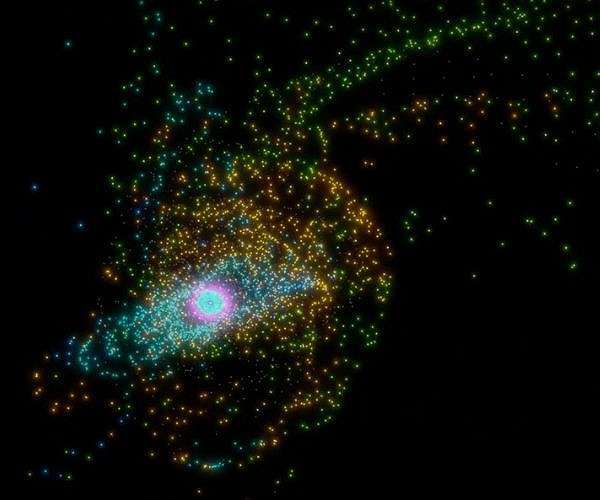12.09.2024

Scientists at the Simulation and Data Lab Astronomy and Astrophysics at Forschungszentrum Julich have carried out more than 3,000 computer simulations to find the cause of the unusual orbits of the transneptune objects. The young sun is surrounded by a disc of the material from which the planets eventually formed.
Many imagine the solar system's edge is marked by Neptune, the furthest known planet. However, astrophysicist Susanne Pfalzner from Forschungszentrum Julich notes, "Several thousand celestial bodies are known to move beyond the orbit of Neptune." It is estimated that tens of thousands of objects larger than 100 kilometers exist in this region. "Surprisingly, many of these so-called trans-Neptunian objects follow eccentric orbits that are inclined relative to the common orbital plane of the planets in the solar system," adds Pfalzner.
Pfalzner, along with her student Amith Govind and Simon Portegies Zwart from Leiden University, employed over 3,000 computer simulations to explore whether the peculiar orbits could be explained by a close encounter with another star.
Their simulations suggest that the unusual orbits of trans-Neptunian objects can be attributed to a distinctive flyby of a neighboring star. Pfalzner explains, "Even the orbits of very distant objects, such as the dwarf planet Sedna, discovered in 2003, can be explained." She further notes that this flyby could account for the orbits of objects like 2008 KV42 and 2011 KT19, which move in the opposite direction to the planets.
"The best match for the outer solar system we found in our simulations was a star slightly lighter than the Sun-about 0.8 solar masses," explains Govind. "This star passed by our Sun at a distance of about 16.5 billion kilometers, which is roughly 110 times the distance from Earth to the Sun and almost four times the distance of Neptune."
In an unexpected discovery, the researchers found that this ancient stellar flyby could also explain phenomena closer to the inner solar system. Some trans-Neptunian objects may have been propelled inward, into the vicinity of the outer giant planets-Jupiter, Saturn, Uranus, and Neptune.
"Some of these objects may have been captured by the giant planets as moons," explains Portegies Zwart. "This would account for the existence of two different types of moons around the outer planets." While regular moons orbit close to their planet on circular orbits, the irregular moons are more distant, following inclined, elongated orbits. Until now, no clear explanation had been proposed for this difference. Pfalzner adds, "The simplicity of this model is what makes it so elegant-it resolves several open questions with a single cause."
Quelle: SD
